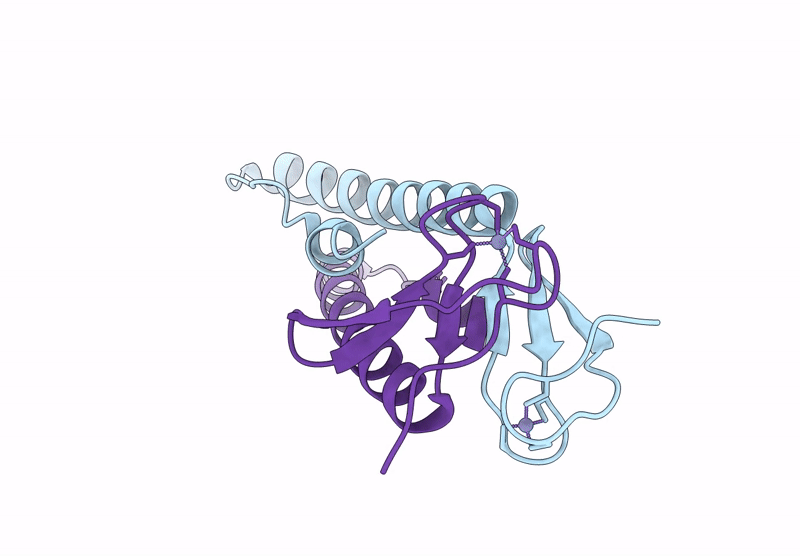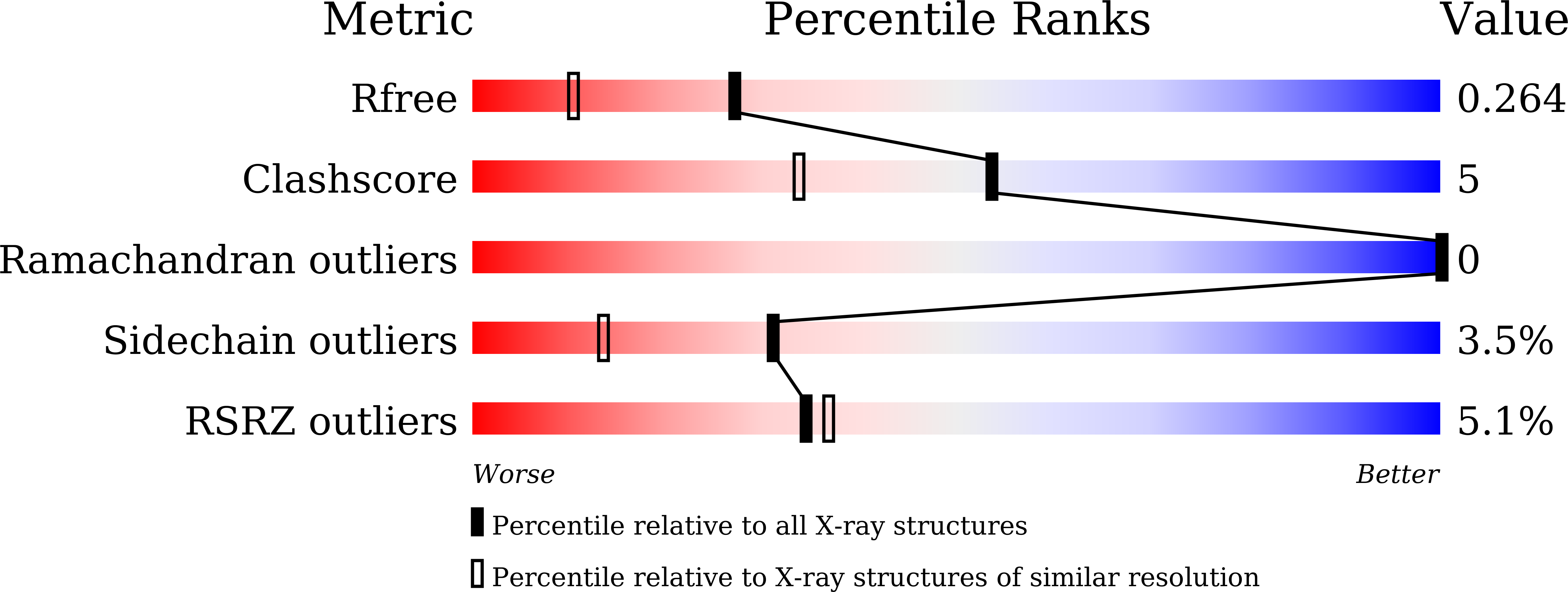
Deposition Date
2024-03-14
Release Date
2025-03-19
Last Version Date
2025-08-20
Entry Detail
PDB ID:
8YOZ
Keywords:
Title:
Crystal structure of the small zinc-finger protein ZifS (TTHA0897) from Thermus thermophilus HB8.
Biological Source:
Source Organism:
Thermus thermophilus HB8 (Taxon ID: 300852)
Host Organism:
Method Details:
Experimental Method:
Resolution:
1.83 Å
R-Value Free:
0.26
R-Value Work:
0.23
R-Value Observed:
0.23
Space Group:
P 21 21 21


